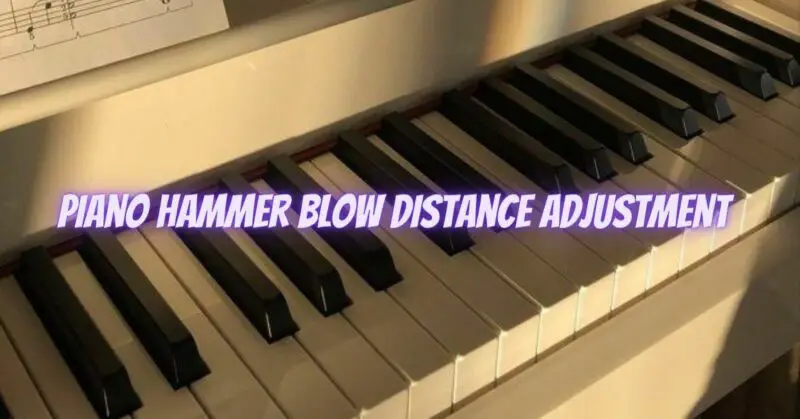The piano hammer blow distance, also known as the hammer travel or let-off distance, is a crucial aspect of a piano’s action regulation. It refers to the distance the hammer travels from the strings’ rest position before it engages with the strings upon key press. Properly adjusting the hammer blow distance is essential for achieving a balanced and responsive touch in the piano’s action. If this distance is not set correctly, it can affect the piano’s playability, responsiveness, and overall tone. In this article, we will explore the importance of hammer blow distance and the steps to adjust it for optimal performance.
Importance of Hammer Blow Distance:
The hammer blow distance significantly affects the touch and feel of the piano. When the blow distance is too short, the hammer may engage the strings too quickly, resulting in a harsh or abrupt sound. On the other hand, if the blow distance is too long, the hammer may strike the strings too softly, causing a loss of power and volume.
Steps to Adjust Hammer Blow Distance:
- Consult the Piano Manual: Before attempting any adjustments, it is essential to refer to the piano’s manual or consult a professional piano technician. Each piano model may have specific guidelines for regulating the action, including the hammer blow distance.
- Locate the Adjustment Screws: The hammer blow distance can be adjusted using screws or regulating buttons located near the hammer flanges on each hammer shank. The number and location of these screws may vary based on the piano model.
- Measure the Blow Distance: Use a blow distance gauge or a ruler to measure the current distance the hammer travels before engaging the strings. Place the gauge against the strings’ rest position and observe the distance the hammer moves before striking the strings.
- Making Adjustments: To increase the blow distance, turn the regulating screws clockwise. Conversely, to decrease the blow distance, turn the screws counterclockwise. Make small adjustments and check the results after each change.
- Test the Touch: After making adjustments, play the piano and evaluate the touch. Ideally, the keys should feel balanced and responsive, and the piano should produce an even tone across all registers.
- Fine-Tuning: If necessary, fine-tune the blow distance by repeating the adjustment process. It may require multiple attempts to achieve the desired touch and tone.
Professional Assistance:
While some adjustments can be made by experienced pianists, it is essential to recognize the limitations of your knowledge and skills. If you are unsure about making adjustments to the hammer blow distance, or if the piano requires more extensive regulation, seek the help of a qualified piano technician. A skilled technician has the expertise and tools to regulate the piano’s action precisely, ensuring optimal performance and a satisfying playing experience.
Regular Maintenance:
To maintain the piano’s optimal performance, it is vital to have it regularly maintained and regulated by a professional piano technician. Regular tuning, regulation, and voicing will keep the piano in excellent condition and ensure that it continues to produce beautiful and consistent sound throughout its lifetime.


